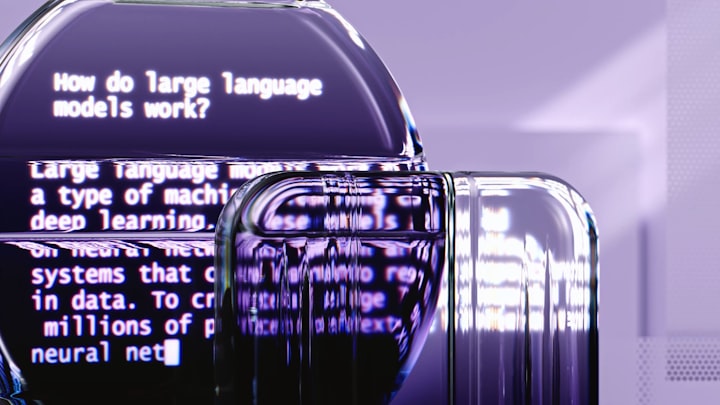What is Track Intrusion Detection System (TIDS) and its uses
Discover the advanced technology of Track Intrusion Detection System (TIDS) that ensures the safety and security of railway tracks. Learn how TIDS can prevent accidents, detect potential threats, and improve railway operations efficiency and understand the critical role it plays.

A Track Intrusion Detection System (TIDS) is a technology used to detect and prevent unauthorized access or activity on railway networks. It is primarily used in rail yard security and freight management applications, but can also be deployed in other areas such as station platforms, overpasses, tunnels, and bridges.
What is Track Intrusion Detection System
Track Intrusion Detection System (TIDS) is an advanced technology used to detect and identify foreign objects or individuals who have entered a secured area such as railways, airports or military installations. The system uses a combination of sensors, cameras, and algorithms to monitor the movement within the designated zone and raises an alarm if any unauthorized entry is detected.
TIDS is designed to provide real-time situational awareness and enhance the security measures of critical infrastructure by quickly detecting any potential threats. It is important to note that TIDS can significantly improve the response time of security personnel, as they are alerted immediately upon detection of an intrusion, allowing them to take necessary actions to prevent any harm or damage.
The system can also collect and analyze data to identify patterns of intrusion attempts, which can be used for predictive analysis and developing effective security strategies.
Additionally, TIDS can be integrated with other security systems such as access control, perimeter fencing, and CCTV surveillance to provide a comprehensive security solution for a wide range of critical infrastructure facilities.
TIDS has been successfully deployed in various parts of the world and has proven to be an effective solution for enhancing security and protecting critical infrastructure from potential terrorist attacks, criminal activities, or sabotage.
However, it is important to note that TIDS has limitations and cannot replace the need for trained security personnel who can respond appropriately to an intrusion. Overall, Track Intrusion Detection System is a valuable tool for enhancing security measures and protecting critical infrastructure from potential threats.

Technology Used in Track Intrusion Detection System (TIDS)
TIDS relies on a combination of different technologies in order to detect and respond to potential security breaches. These technologies include video surveillance, thermal imaging, motion sensors, and artificial intelligence algorithms. Video surveillance involves the use of cameras strategically placed along the track to monitor any unusual activity.
The technology used in a TIDS may vary depending on the specific implementation, but some common components of the system may include:
- Sensors: TIDS sensors may include vibration sensors, pressure sensors, or acoustic sensors, which are used to detect the presence of objects or people on or near the tracks.
- Cameras: TIDS cameras are often used to provide visual information about the intruder, and may be equipped with features such as motion detection or infrared imaging.
- Communication Network: TIDS systems often use wireless communication networks to transmit data from sensors and cameras to a central control station or security personnel.
- Software: TIDS software is used to analyze data from sensors and cameras to detect potential intrusions, and to trigger alarms or other responses.
- Alarms and Response Systems: TIDS alarms may include audible alarms, flashing lights, or automated responses such as the deployment of security personnel or the activation of barriers to prevent further access to the tracks.
Thermal imaging is also widely used to detect heat signatures to differentiate between humans and animals. Motion sensors are also being used to detect any movement along the track. Artificial intelligence algorithms process and analyze this data in real-time to identify potential threats or intrusions.
Overall, combining these technologies provides a highly effective and reliable security system that can help prevent security breaches before they occur. Moreover, TIDS can also be integrated with other security systems, such as access control and alarm systems, to create a comprehensive security solution for Transit Authorities.
How Track Intrusion Detection System Works
Working principles of TIDS and its components, including sensors, processing unit, and alerting mechanisms. To begin with, TIDS relies on a network of sensors to monitor the protected area for any suspicious activities. The system works by using a combination of sensors, cameras, and software to detect and track objects or people that come into contact with the tracks.
Here is an overview of how a TIDS operates.
- Sensors are installed along the tracks: TIDS sensors may include vibration sensors, pressure sensors, or acoustic sensors, which are used to detect the presence of objects or people on or near the tracks.
- Cameras are installed: TIDS cameras are often used to provide visual information about the intruder, and may be equipped with features such as motion detection or infrared imaging.
- Data is collected and transmitted: Data from sensors and cameras is transmitted to a central control station or security personnel using a wireless communication network.
- Software analyzes data: TIDS software analyzes data from sensors and cameras to detect potential intrusions. The software may use machine learning algorithms to learn the normal patterns of activity along the tracks and identify unusual or abnormal behavior.
- Alarms are triggered: If the software detects an intrusion, it triggers an alarm, which may include audible alarms, flashing lights, or automated responses such as the deployment of security personnel or the activation of barriers to prevent further access to the tracks.
- Response is initiated: Once an alarm is triggered, security personnel may be dispatched to the site to investigate and respond to the intrusion.
TIDS is a sophisticated system that uses a combination of hardware and software to provide real-time security for railway tracks. The system is designed to detect and respond to potential threats quickly and efficiently, helping to keep railway passengers and cargo safe.

How Artificial Intelligence is helping TIDS
In recent years, the field of artificial intelligence (AI) has made significant strides in enhancing various aspects of cybersecurity. One such aspect is track intrusion detection, where AI has proven to be a game-changer. Here are some ways in which AI is helping TIDS:
- Machine Learning: TIDS software can use machine learning algorithms to learn the normal patterns of activity along the tracks and identify unusual or abnormal behavior. This allows the system to distinguish between normal train traffic and potential intruders more accurately.
- Automated Data Collection: AI is helping to automate the collection of data from a variety of sources, including web scraping, text analysis, and natural language processing. This automated process can help TIDS to collect large amounts of data quickly and accurately.
- Object Recognition: TIDS cameras can be equipped with object recognition software that can identify and track specific objects, such as humans or vehicles, in real-time. This helps to improve the accuracy of the system, as it can reduce false alarms caused by non-threatening objects, such as animals.
- Predictive Analytics: TIDS software can use predictive analytics to analyze historical data and identify trends or patterns that may indicate a potential security threat. This can help security personnel to proactively address potential threats before they occur.
- Decision-Making: AI algorithms can be used to assist security personnel in making decisions during a security event. For example, the system can provide information about the location and type of intrusion, and suggest appropriate responses based on pre-defined protocols.
- Visualization Tools: AI-based visualization tools such as dashboards and interactive visualizations allow TIDS to better understand their data by providing an easy-to-understand graphical data.
AI is helping TIDS to become more intelligent and effective, by improving the accuracy and efficiency of the system, reducing false alarms, and providing more actionable information to security personnel.
How TIDS is helping Transit Authorities Worldwide
This technology has various applications in ensuring the safety and security of rail tracks, including identifying potential threats to infrastructure and preventing accidents caused by intrusions on the tracks. In addition, TIDS can also be used to monitor the movement of trains and ensure they are following their designated routes, as well as provide data on track usage patterns for maintenance and planning purposes.
Moreover, TIDS can be integrated with other railway systems, such as signaling, communication, and train control, to enhance the overall efficiency of the rail network. For instance, TIDS can detect the presence of railway workers or maintenance crews on the tracks and alert train drivers to slow down, thus preventing any potential accidents or collisions.
Furthermore, TIDS can also aid in investigating accidents or incidents on rail tracks by providing detailed information about the timing and location of an intrusion, as well as any other relevant data, such as the speed and direction of the train at that time.
Overall, TIDS is a valuable tool for ensuring the safety and security of rail tracks and improving the efficiency and effectiveness of railway systems. Its widespread adoption can significantly reduce the number of accidents and incidents on rail tracks.
However, implementing TIDS also raises concerns about privacy and surveillance as it involves monitoring and tracking individuals' movements near rail tracks.
Policymakers and stakeholders need to address these privacy concerns and ensure that the use of TIDS complies with ethical standards and legal regulations. Moreover, developing standardized protocols and guidelines for TIDS implementation can help ensure consistency and fairness in its use across different railway systems.
In conclusion, integrating TIDS into railway systems has numerous safety, security, and efficiency benefits. Still, policymakers must address privacy concerns and ensure its use meets ethical and legal standards.
We can help you
Let's talk about how to unlock the potential of TIDS and leverage innovative solutions to bring cutting-edge technology to your customers.





